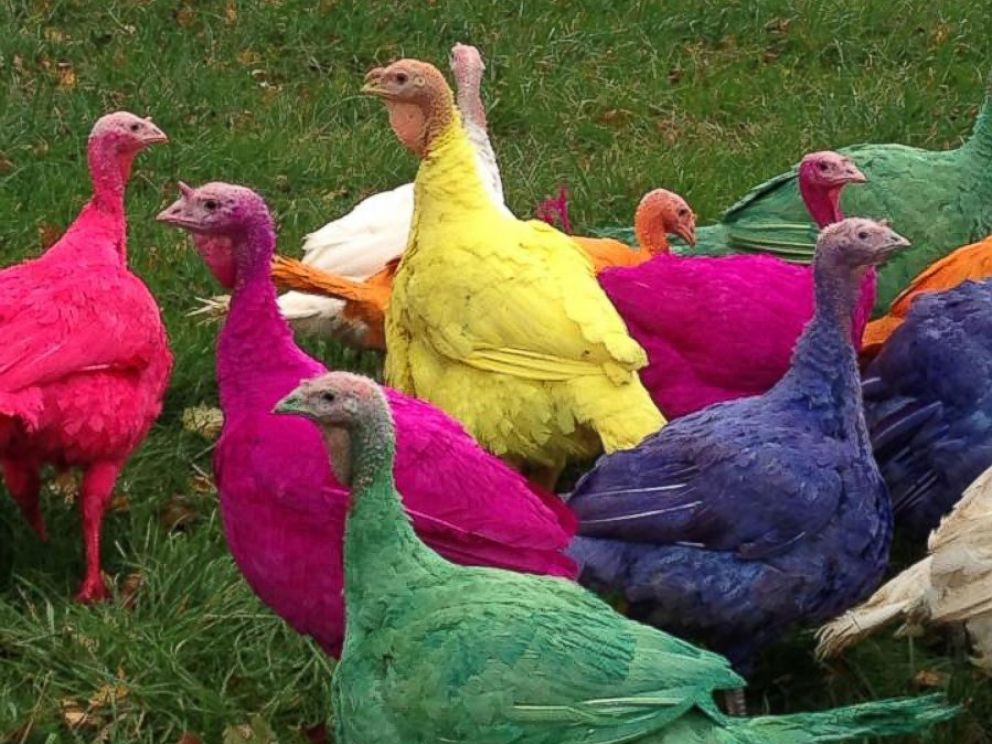That iconic turkey profile – the plump body, bald red head, and rich brown feathers – is familiar even to those who don’t regularly observe wildlife But not every turkey sports this classic look Turkeys actually display a diverse range of colors and patterns depending on the breed.
Wild turkeys and domesticated turkeys can appear quite different. Even within wild flocks, male turkeys flash brighter hues than their female counterparts. The colors serve purposes from camouflage to attracting mates.
Let’s explore the palette of turkey plumage and what gives these birds their one-of-a-kind coloring
Wild Turkey Feather Colorations
Wild turkeys sport gorgeous natural camouflage in rich, earthy tones. This helps them blend into the forests and fields where they live.
Here are the main feather colors seen on North American wild turkeys
-
Dark brown – This is the predominant body color, covering the wings, back, chest and tail. Shades range from chocolate to near black.
-
Bronze iridescence – Metallic olive-bronze and coppery sheens shine on many body feathers. This results from structural coloration.
-
Rusty tan – The tips of the tail and rump feathers typically show this warm rusty coloration.
-
Creamy white – Thick white bars decorate the wings. These become visible when the bird spreads its wings.
-
Blue and red skin – Bare skin on the head and neck varies from grayish blue to bright red.
Vibrant Male Wild Turkey Colors
Male wild turkeys, also called toms or gobblers, display more vibrant and iridescent feathers than females:
-
Intense coppery, bronze and green sheens on body feathers.
-
Reddish-chestnut tint on tail and wing tips in some birds.
-
Black facial feathers and main tail feathers.
-
Blue head and neck skin that turns brilliant red during mating displays.
These colorful features help attract females and intimidate competing males.
Subtle Female Wild Turkey Plumage
Female wild turkeys, also called hens, are more subtly colored than the showy males:
-
Overall muted brown body with little iridescence.
-
Rusty tan bands on tail tips and wing edges.
-
Distinctive white barring on spread wings.
-
Dull grayish blue head and neck with a small red wattle.
-
Faint bronze sheen in some hens’ body feathers.
The hen’s camouflage plumage helps protect eggs and chicks from predators.
Adorable Turkey Poult Colors
Newly hatched wild turkey chicks called poults sport an endearing downy coat:
-
Fluffy overall light brown color.
-
Dark brown striping for camouflage.
-
Yellowish tan face and legs.
-
Visible dark wing bar even on young poults.
As juvenile true feathers grow in, poults resemble small female turkeys.
Domestic Turkey Varieties
Centuries of domestication have led to very different coloring in farm-raised turkeys:
-
Most are solid white, for easier processing and consumer demand.
-
Some heritage breeds show natural brown, rust, gray and black colors.
-
Exaggerated red wattles and head caruncles from selective breeding.
-
Rarer blue, lavender, and splashed patterned birds also occur.
-
Less iridescence compared to the shining wild turkey feathers.
Gender Differences in Color
When distinguishing male from female wild turkeys, look for these color clues:
-
Males have intense metallic coppery and bronze feathers.
-
Watch for a reddish-chestnut glow on the tail or wings of a male.
-
Crisp white barring on duller brown wings indicates a female.
-
The male’s blue head and red wattle are much more vivid.
So pay attention to subtle color cues to tell gobblers from hens when turkey watching!
Rare and Unique Coloring
While most turkeys are various shades of brown, white, and black, unusual colors sometimes pop up:
-
Albino – Lack of pigment creates all-white plumage.
-
Lavender or self blue – A dilute gray color from recessive genes.
-
Chocolate, red and buff – Rare recessive genes produce these warm tones.
-
Splash – Irregular white spotting pattern, like paint splatters.
These unique genetic variations often occur by surprise in backyard flocks.
Turkey Feather Colors and Patterns
Whether subtly patterned wild turkeys or solid white domestic birds, the range of colors serves purposes from camouflage to mating displays.
Next time you see a turkey, take a closer look at its one-of-a-kind plumage. The variety of feather hues and designs is sure to amaze.

How To Draw A Funny Turkey
FAQ
What is the most colorful turkey?
What is the rarest turkey color?
What are the colors of heritage turkeys?
What color is a female turkey’s head?
|
Feature
|
HEN
|
GOBBLER
|
|
Head
|
blue-gray color
|
red, blue and white colors
|
|
Body
|
light, rusty-brown
|
black
|
|
Beard
|
usually no beard
|
long bristle-like beard
|
|
Spurs
|
no spurs
|
usually 1/2-inch or longer spurs
|
